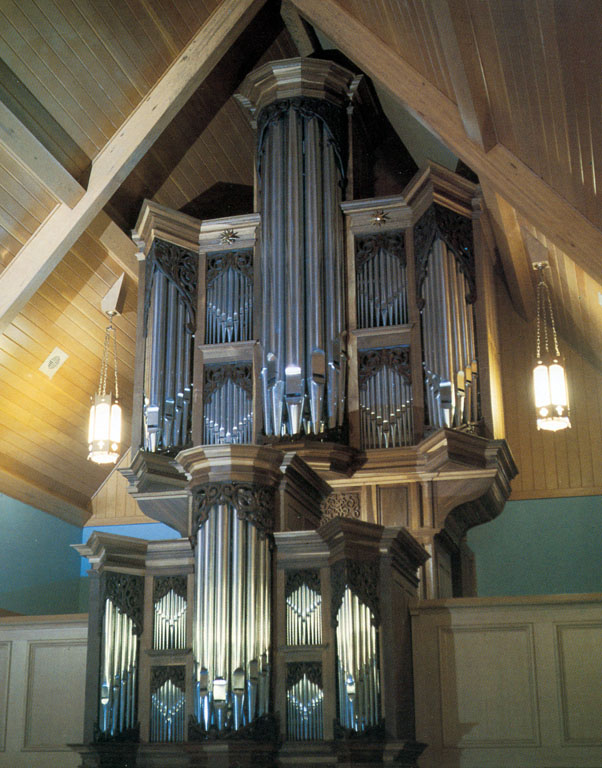Modeled after a 17th century design often used by Bach, the completely mechanical organ combines metal pipes manufactured in Germany with wood pipes and solid oak cabinetry crafted in the U.S. Organists are encouraged to listen to and play the instrument. Demonstrations are also available by making advance arrangements.
 Brustpositiv
Brustpositiv
- Gedeckt 8′ (wood)
- Floit 4′ (wood)
- Principal 2′
- Quint 1½’
- Terzian II 1⅗’ (double-draw with Quint)
- Scharff III 2⅔’
- Krumphorn 8′
Werck
- Principal 16′ (1-7 from Quintadena)
- Quintadena 16′
- Octava 8′
- Hohlfloit 8′
- Octava 4′
- Floit 4′
- Nasat 3′
- Octava 2′
- Mixtur IV-VI 1½’
- Cymbel III ½’
- Trommet 8′
Rueckpositiv
- Praestant I-II 8′ (1-7 common with Gedeckt)
- Gedeckt 8′
- Quintadena 8′
- Octava 4′
- Rohrfloit 4′
- Ocatava 2′
- Waldfoit 2′
- Sesquialtera II 2⅔’
- Scharff IV 1′
- Dulcian 16′
- Trechterregal 8′
Pedal
- Principal 16′ (1-7 wood, in gross Pedal case; 8-30 from Werck)
- Subbass 16′ (wood, in gross Pedal case)
- Octava 8′ (from Werck)
- Octava 4′ (from Werck)
- Nachthorn 2′
- Mixtur IV-VI 1½’
- Posaun 16′ (in gross Pedal case)
- Trommet 8′ (from Werck)
- Cornet 2′
Tremulant (entire organ)
Cymbelstern
Vogelgesang
Couplers:
- RP/W on keydesk – shove
- W/P
- RP/P
Optional wind stabilizers
Optional manual (by foot pedals) winding
Tuning: Kirnberger III, A 440
Manual compass 56 notes
Pedal compass 30 notes
Total of 2,511 pipes
Organ design mainly after 1680’s Schnitger.